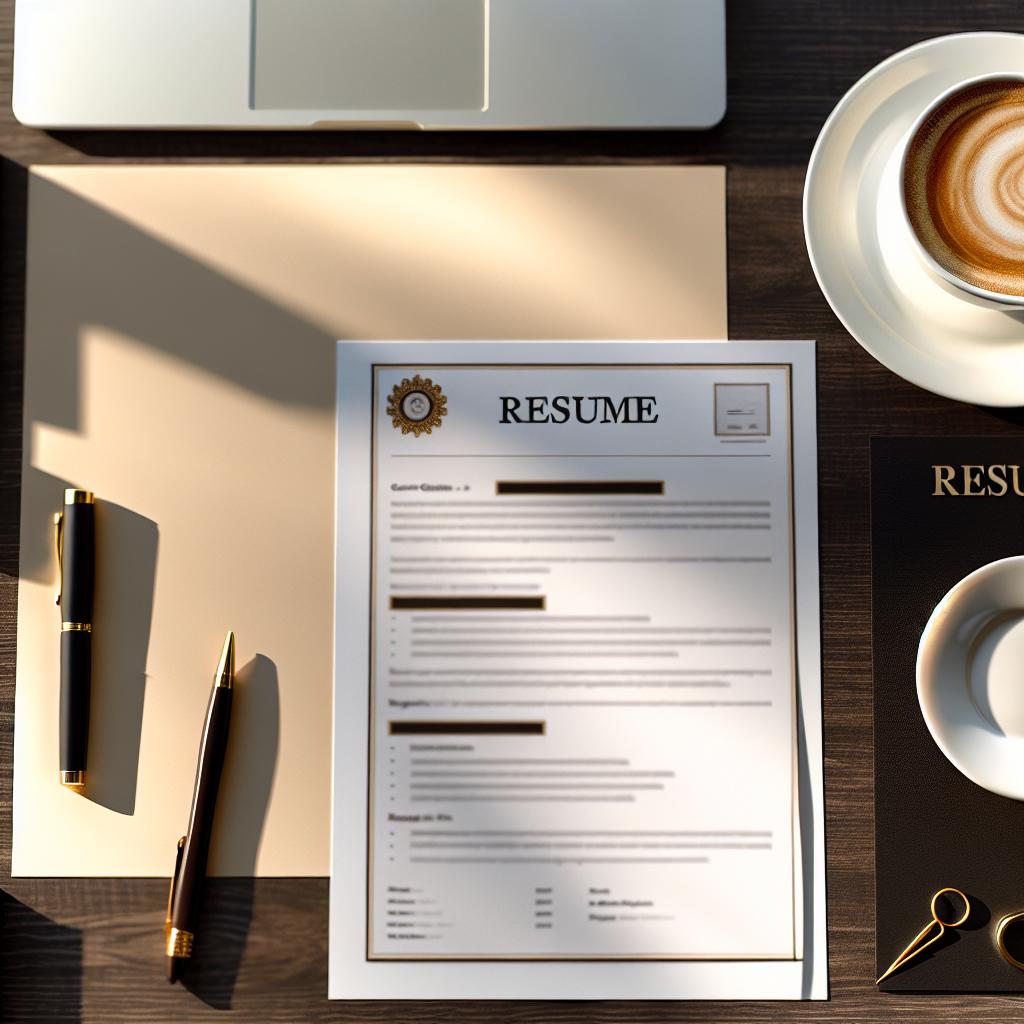Understanding the Basics
Creating a winning resume and cover letter is a crucial step in the job application process. Both documents should effectively communicate your qualifications, experience, and enthusiasm for the position. A well-crafted resume and cover letter can differentiate you from other candidates, helping you secure an interview. In today’s competitive job market, standing out is more important than ever, and a well-prepared resume and cover letter are foundational tools in that effort.
Key Components of a Resume
A resume typically includes several sections, each serving a specific purpose to provide a comprehensive view of your professional background.
Contact Information: At the top of your resume, clearly display your full name, phone number, and email address. This ensures that potential employers have an easy way to contact you. Inclusion of a LinkedIn profile link can also be beneficial, provided the profile is up-to-date and maintains a professional appearance, reflecting your experience and career goals.
Professional Summary: This section offers a succinct overview of your professional experience, skills, and career objectives. It’s essential to tailor this section to match the specific job description, highlighting how your background aligns with the employer’s needs. Ideally, this summary should capture the reader’s attention and encourage them to read further.
Work Experience: Your professional journey is best demonstrated through a chronological listing of positions held. Start with your most recent position and work backward. Each entry should include your job title, company name, location, and dates of employment. Use bullet points to briefly describe your key responsibilities and achievements in these roles. Quantifying accomplishments with metrics can further strengthen this section, providing clear evidence of your contributions.
Education: Here, list your academic achievements, including the name of the institution, the degree obtained, and graduation date. For those with limited work experience, such as recent graduates, more detail here can be helpful, including relevant coursework or honors.
Skills: This section should spotlight skills specific to the job for which you are applying. These can be divided into technical skills, such as proficiency with specific software or tools, and soft skills like communication or problem-solving abilities. Employers seek candidates who fulfill the job requirements while also bringing unique talents to their teams.
Additional Sections: Depending on the job, additional resume sections can provide value. Include certifications, awards, volunteer work, or languages spoken. Tailor these sections to highlight experiences relevant to the position you are seeking.
Crafting a Compelling Cover Letter
A cover letter should complement your resume and provide deeper insight into your suitability for the role. It is your opportunity to personalize your application and align your individual experiences with the job’s requirements.
Introduction
Your cover letter should begin by directly addressing the hiring manager. If the job listing doesn’t specify a name, consider researching who would likely be evaluating your application. Introduce yourself and mention the job for which you’re applying. Briefly explain what drew you to this specific role and company, setting a positive tone for the rest of the letter.
Main Body
Within this section, provide concrete examples of your previous professional experiences, ensuring they relate directly to the position sought. Highlight specific skills and accomplishments, explaining how they equip you as a strong candidate. Beyond listing qualifications, use this space to also demonstrate your understanding of the company, suggesting proactive ways you can contribute to its goals and culture. The integration of company knowledge into your cover letter can signal your genuine interest and preparedness.
Conclusion
Conclude with a definitive closing statement reinforcing your interest in the role and expressing a willingness to discuss your application further. Such statements can leave a strong impression, suggesting eagerness and initiative. Don’t forget to thank the reader for their time and consideration, maintaining professionalism and courtesy.
Formatting Tips
The format of your resume and cover letter can greatly influence perceptions of professionalism and attention to detail.
Keep It Concise: Aim for precision by keeping your resume one page long if you possess fewer years of experience and no more than two pages if you have extensive experience. Cover letters should also not exceed one page.
Use Professional Fonts: To ensure readability, choose clean, professional fonts such as Arial, Calibri, or Times New Roman. Font sizes between 10 and 12 points generally maintain readability while maximizing space.
Consistent Layout: A consistent format and layout is key to maintaining a professional appearance. Each section should use corresponding fonts, text sizes, and styles, creating a cohesive document.
Proofread: Meticulously review your documents for any spelling or grammatical errors. These mistakes can detract from professionalism. For accuracy, consider having a friend or colleague review your documents. A fresh perspective can often catch errors you might miss.
Additional Resources
There are numerous additional resources available for those seeking further guidance on crafting resumes and cover letters. Consider exploring online platforms or engaging professional services for personalized advice and templates tailored to specific career fields.
- The Balance Careers: Offers a wealth of knowledge regarding career advice and resume crafting.
- Indeed Career Guide: Provides numerous resources, including writing tips and examples.
A well-prepared resume and cover letter can significantly enhance your chances of landing an interview. By taking the time to thoughtfully tailor and finesse these documents to align with each job application, you can effectively showcase your qualifications and passion for the position. Ultimately, investing effort in these initial job application steps can yield fruitful career opportunities, underscoring their importance in your professional journey.
This article was last updated on: July 13, 2025

